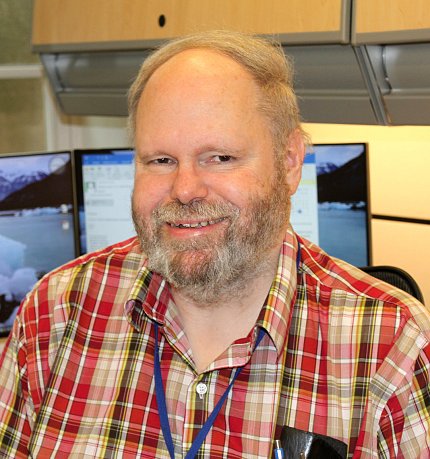Wawrousek, Designer of First Transgenic Mouse at NEI, Retires

Dr. Eric Wawrousek, director of the National Eye Institute Genetic Engineering Core, retired Aug. 31 after more than 31 years at NEI. Wawrousek oversaw the exponential growth of transgenic mouse model engineering at NEI.
“Eric was critical in establishing the GEC as one of the premier genetic engineering core facilities at the NIH,” said Dr. David Schneeweis, NEI deputy scientific director. “He also operated a highly efficient animal colony management system that was unique to the NEI. It has saved the NEI a lot of money in animal costs over the years and has benefitted NEI scientists immensely.”
Wawrousek graduated from Rensselaer Polytechnic Institute with a bachelor of science degree in chemistry. After earning his doctorate in biochemistry and molecular biology from the University of Maryland, he joined the NEI Laboratory of Molecular and Developmental Biology (LMDB) as a postdoctoral fellow in 1984. There, he worked with LMDB chief Dr. Joram Piatigorsky, studying transcriptional regulation and the expression of crystallins, which are proteins that contribute to the transparent and refractive qualities of the lens.
Wawrousek developed the first NEI-generated transgenic mouse models while a postdoctoral fellow for the purposes of studying crystallin gene expression. Later, while on permanent staff, he generated NEI’s first gene knockout mouse model by knocking out a gene for a type of crystallin called alphaB.
Designing the model in the early 1990s took more than a year and required detailed mapping of the genetic locus. “Things have changed quite a lot since then in terms of the ease and speed that models can be developed today,” Wawrousek said.
Nevertheless, the alphaB crystallin knockout model was instrumental in launching collaborations between him and dozens of scientists because it helped establish that crystallin protein plays a key role not only in the eye’s structures, but also in other tissues of the body including muscle and nervous system tissues.
In 1988, after his NIH postdoc, Wawrousek joined SmithKline Beecham, where he ran the transgenics and monoclonal antibody production facilities.
In 1991, NEI recruited Wawrousek back to NIH to lead the newly launched NEI Central Transgenic Facility, and as an LMDB section head. The NEI Central Transgenic Facility was later subsumed into the GEC, expanding the facility’s scope and function.
Until his retirement, Wawrousek co-directed GEC with Dr. Lijin Dong, managing the facility’s budget and most of its administrative functions. He also supervised technicians who perform DNA isolation and genotyping, mouse line cryopreservation and mouse colony management. He orchestrated organization of the facility’s mouse lines, establishing a system to cryopreserve mouse germplasm to create space for new lines.
Over the years, the core facility generated hundreds of mouse lines by simple DNA microinjection, by knocking genes in and out with homologous recombinant technology and, more recently, by deploying CRISPR/Cas9 to edit the genes.
As a research biologist at NEI, Wawrousek published more than 100 papers, many of them widely cited. He served as chair of the NEI safety & health committee and on the NEI crisis response team, as well as many other NEI committees over the years.
In retirement, he plans to volunteer at local scientific societies and hopes to devote his time and energy to political campaigns.
